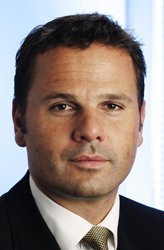RFID is gathering pace with companies in the retail, pharmaceutical, manufacturing and packaging industries pledging their commitment to the technologythis was the key message to emerge from the GS1 UK EPCglobal Conference and Exhibition in June. Here David Lyon, EPCglobal Business Manager at GS1 UK outlines the latest developments in standards for radio frequency identification (RFID) that are playing a major part in driving forward adoption of the technology.
A year ago, it would not have been unreasonable to describe progress towards the widespread adoption of RFID as patchy.
Technical standards still needed a lot of work, without which manufacturers would be unable to commit to developments and although some retailers were willing to make the move to adopt RFID, there wasnt much evidence of tangible progress. Suppliers were struggling to see a return on investment and a roadmap was needed to ensure integration with existing investments, such as bar codes.
the most significant development in standards over the past year has been the ratification in December 2004 of the UHF Generation 2 tag/reader interface specification as an EPCglobal standard.
Now, however, the picture looks somewhat different, as reinforced by the recent GS1 UK EPCglobal Conference and Exhibition. The message that resounded loud and clear from industry experts across all sectors and from all parts of the supply chain was that the time for RFID has arrived. The successful implementation of RFID by some of the worlds largest organisations, the falling cost of RFID tags, not forgetting new developments in standards for RFID are all paving the way for the widespread adoption of the technology and the many benefits it bringsfrom supply chain efficiencies and increased productivity to improved consumer availability and reduced counterfeit.
The role of EPCglobal
EPCglobal, part of global standards body GS1, has a critical part to play. It is tasked with developing and promoting user-driven RFID standards in the supply chain, ensuring the adoption of a single, consistent and internationally recognised system that will allow companies of all sizes, across all industries and in all countries to do business together.
Undoubtedly the most significant development in standards over the past year has been the ratification in December 2004 of the UHF Generation 2 tag/reader interface specification as an EPCglobal standard. This new standard, developed by a collaboration of more than 60 of the worlds leading technology companies, is a fundamental element of the EPCglobal Network, which combines RFID technology, the Internet and the Electronic Product Code (EPC) to provide accurate, cost-efficient visibility of information throughout supply chains.
With smaller tags, faster read rates and longer read ranges, the benefits of Gen 2 make it attractive for users of the technology to buy compliant hardware as well.
The UHF Generation 2 ratification has made it possible for a whole host of vendors to begin making products based on the specification, which was designed to work globally and has been submitted as an international standard to the International Standards Organisation (ISO). It has opened the door for a large number of manufacturers to make Generation 2, or Gen 2, compliant products quickly, based on a single converged standard and enabled global interoperability of EPC systems.
With smaller tags, faster read rates and longer read ranges, the benefits of Gen 2 make it attractive for users of the technology to buy compliant hardware as well. Major European retailers such as Metro and Tesco have already committed to use Gen 2 tags and readers as soon as they become available, which is imminent.
Our next focus will be on delivering the 12 standards required to take data from the reader, filter it and pass it through to an organisation's internal systems, into the EPCglobal Network and the Internet for sharing securely with its trading partners.
Another significant development has been in the area of frequency allocation. Last September national communications authorities in Europe voted to adopt new standards developed by the European Telecommunications Standards Institute (ETSI). These will allow RFID Gen 2 readers to use more power (2 Watts) and operate in a wider UHF band (between 860 - 960 MHz) and so for the first time achieve a reading performance comparable to the US.
While it is true to say that considerable progress in developing standards for RFID has been made in the last year, more still needs to be done to deliver the RFID vision.
We have already come a long way, but were not there yet. We have standards in place dealing with data capture through the use of RFID. Our next focus will be on delivering the 12 standards required to take data from the reader, filter it and pass it through to an organisation's internal systems, into the EPCglobal Network and the Internet for sharing securely with its trading partners. That is, after all, what EPCglobal and the EPCglobal Network are all about.

David Lyon is EPCglobal Business Manager at GS1 UKa not-for-profit standards organisation entrusted with driving the global adoption of Electronic Product Code (EPC) technology.

Add a Comment
No messages on this article yet